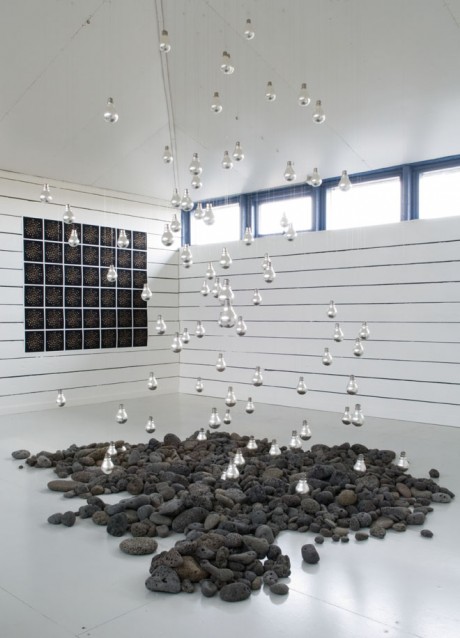 Sense in Place : Site-ations International, Europe 2005-6
Sense in Place : Site-ations International, Europe 2005-6
Introduction from Sense in Place catalogue
The project initiated by the Artists Project, Cardiff carries with it a number of ideas first developed within the various environmental and conceptual art movements of the 60’s and 70’s. Dialogue and practice that searched for new contexts and territories outside the conventions of the gallery system and as a challenge to the reification of culture and the tendency to commodify and reduce art to market forces and the dictates of fashion.
Through the work of the projects curators across five countries and the artists invited to make work for another culture, the problem of how one is able to take position within a new place so that in the words of Frederic Jameson: “grasp our positioning as individual and collective subjects and regain our capacity to act and struggle which is at present neutralised by our spatial as well as social confusion”
As a practical model it sought for a wide variety of artistic responses to environments and landscapes across Europe based upon a network of contemporary art practices and artist led organisations. The project has sought to capture in one time different ideas of what we mean by environments and what we mean by the environment for art.
Countries participating: Ireland, Iceland, Spain, Poland, Latvia, Wales
Sense in Place in Reykjavik, Iceland. Artists: Sarah Browne, Tomy Ceballos, Monica Fuster, Kristaps Gulbis, Paul Hurley, Philippa Lawrence, Mauriusz Soltysik, Sean Taylor.
Aims: To investigate ‘energy’ in Iceland in the broadest sense of the word & to raise public awareness of energy issues in relation to human needs.
Place: The island of Videy just outside the harbour of Reykjavik. Although a historic site and one of the corner stones of the formation of the city, the island is relatively untouched by modernity. Anyone who visits the island experiences the harshness of the Icelandic nature and human attempts to cope with it. Harnessing and using natural energy is a key factor in the Icelandic way of living and for the future prospects of the nation.
My work: was made after a site visit and a long period of assimilation of that experience. The challenge is always how to make a meaningful response to a specific but previously unknown environment to its culture and in this case to issues of energy, place and power. My experience was one of openess and stillness with an over riding sense of the timeless power of nature. I resolved to simplify, to distill, to make work about the forces and elements that affect us all as humans our need for energy, light and water. This is a country surrounded by water, and heated by it, is a land of polarities – in temperature, and in its seasons. It is isolated, pure, complete, but unforgiving and hard to farm or draw life from.
‘Fallen Star’ and ‘Starburst’ use white gold leaf and light bulbs to reference harnessed power in the form of electricity. The bulbs in ‘Fallen Star’ hang in a former store room (the ‘donkey hut’) over collected granite like rain frozen in time. The gold slowly tarnishes in the atmosphere referring to the immutability and the constant flux and cycle of all things. ‘Barcode’ on the downpipe of the former School House takes the codes from bottled water available even in a country with pure and plentiful water – water is a luxury as well as a necessity in the Western World when other countries struggle for access to clean water. The site of this piece was opposite the coca-cola bottling plant and I was interested to be told that Icelanders per capita are the second biggest consumers of soft-drinks.